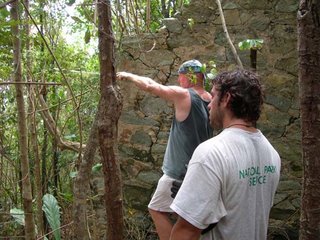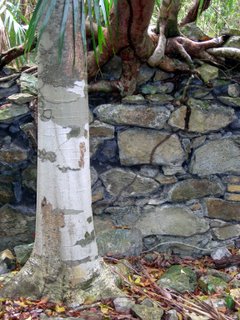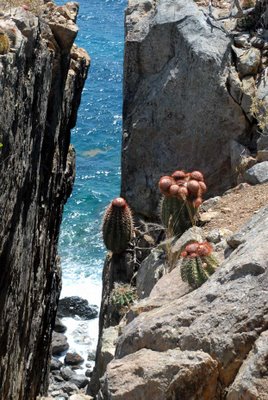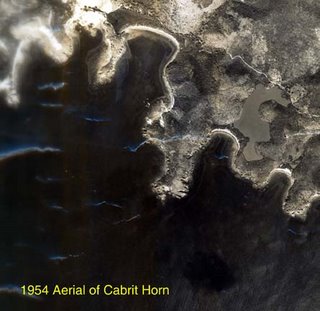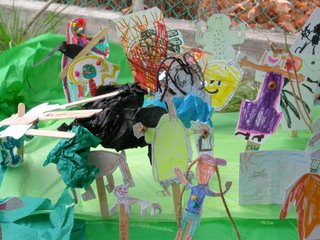 Crafts made out of recycled materials
Crafts made out of recycled materialsEarth Day, 2006
We just returned from a successful Friends of the Virgin Islands National Park Earth Day Celebration, 2006 on the ball field in Cruz Bay. There were many booths for the schoolchildren to visit: recycling, organic gardening, recycled crafts and of course, the National Park Service. Our Resource Management Team staffed a table which gave an overview of how we protect the natural resources of the island, such as turtles and coral by using moorings, which prevent boats from anchoring in fragile coral and seagrass.
 Mick and Susanna had a mini-excavation for the children, complete with Taino potsherds and historic artifacts buried in tuperware boxes filled with sand. Armed with trowels and shovels, hundreds of kids got to experience a dig and learned the difference between historic and prehistoric artifacts. Exclamations of “I found something, I found something” rang out and as one adult participant said, “They’re getting bit by the bug.”
Mick and Susanna had a mini-excavation for the children, complete with Taino potsherds and historic artifacts buried in tuperware boxes filled with sand. Armed with trowels and shovels, hundreds of kids got to experience a dig and learned the difference between historic and prehistoric artifacts. Exclamations of “I found something, I found something” rang out and as one adult participant said, “They’re getting bit by the bug.” 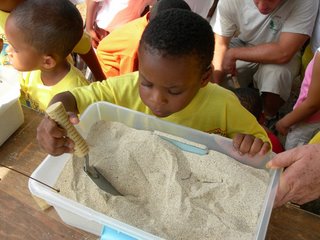
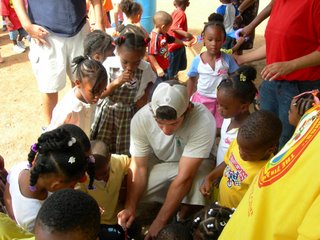
The event was a pleasant break from a week spent on the Archeological Sites Management Information System (ASMIS) and cataloging. For ASMIS, we updated the database with GPS points and photographs. Mick continued to catalog VIIS-227 which is field finds and prepared three reports on the Turtle Bay Shovel Tests, Cinnamon Bay Erosion and the Caves. Ken has been preparing presentations for the upcoming Society of American Archeologists(SAA) Conference in San Juan, PR next week, in addition to the UNESCO Rock Art Conference in Guadelupe the following week. Mick will also attend the SAA conference while Susanna works on collection management.

